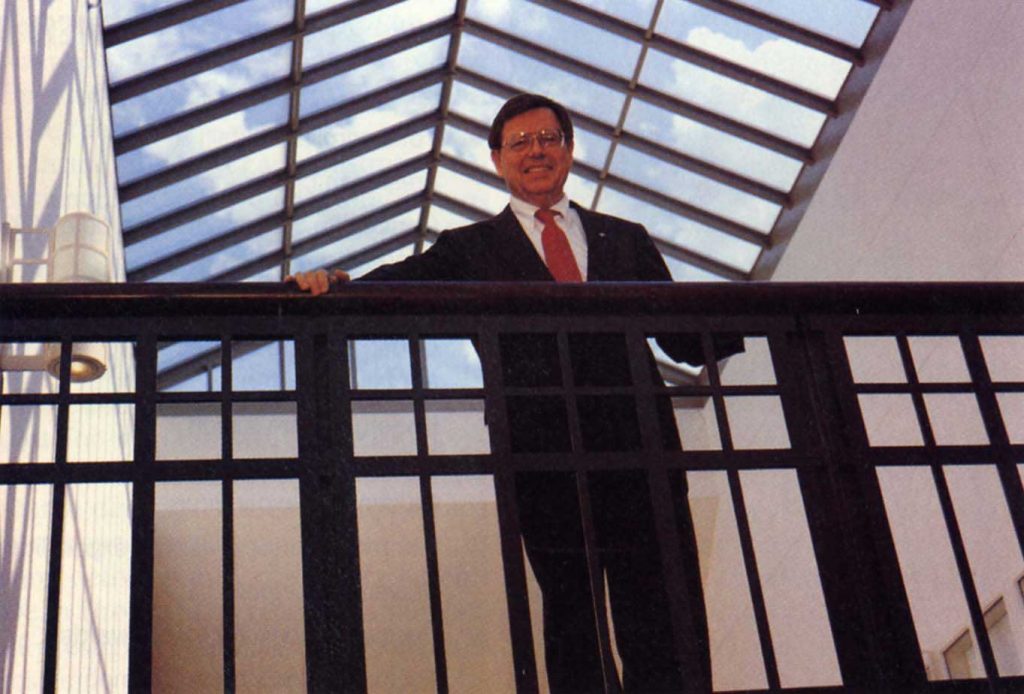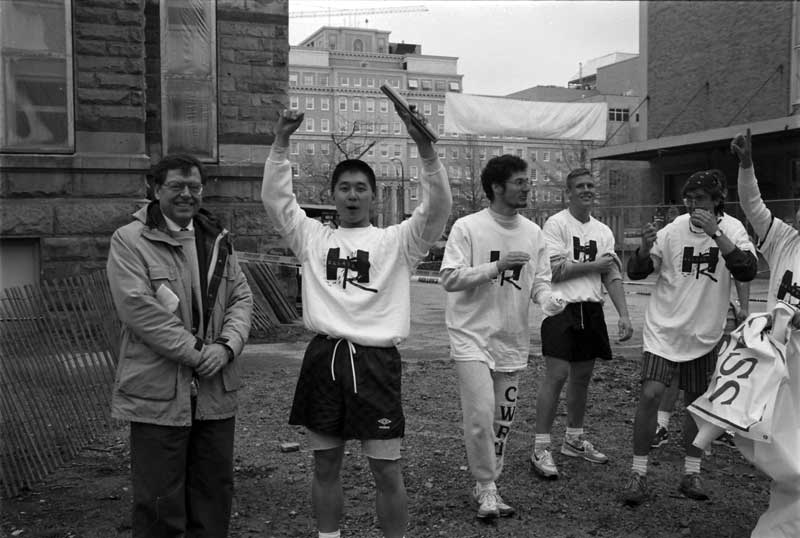
The Case Western Reserve community is mourning the death of Agnar “Ag” Pytte, who led the university from 1987 to 1999 and contributed enormously to the physical growth of the campus, the quality of the undergraduate experience, and the strength of its finances. Pytte died Friday, Nov. 6. He was 82.
“To me, the university will always be a special place, an ideal place, a shining city on a hill,” Pytte declared in his 1987 inauguration address, “devoted to the life of the mind, the search for truth, guided by reason, protective of free speech, tolerant of differences, a place where ideas are the coin of the realm, a community of research, scholarship, teaching, learning and service.”
Educated in physics at Princeton and Harvard, Pytte came to this campus after roughly three decades at Dartmouth College, the last six as its provost. Within months of his arrival in Cleveland, the nation experienced “Black Monday,” when stocks tumbled more than 22 percent on Oct. 19, 1987. While certainly sobered by the financial crisis, Pytte nevertheless launched Case Western Reserve’s first campus master plan, and then, in 1989, then embarked on a five-year, $350 million capital campaign. That effort ultimately brought $416.5 million to Case Western Reserve, and was the university’s last major fundraising effort before Forward Thinking: The Campaign for Case Western Reserve University became public in 2011.
During Pytte’s 12 years as president, the university ultimately completed $325 million in capital projects, among them the:
- Mandel School of Applied Social Sciences (now the Jack, Joseph, and Morton Mandel School of Applied Social Sciences);
- Richard F. Celeste Biomedical Research Building;
- Kent Hale Smith Engineering and Science Building;
- George S. Dively Executive Education Center;
- Kelvin Smith Library; and
- Veale Convocation, Recreation and Athletic Center.
In addition, the university renovated Adelbert Hall after a devastating 1991 fire; expanded and renovated the School of Law; and renovated both the Rockefeller Physics Building and Clark Hall, the latter to allow the historic structure to become the home for the Baker-Nord Center for the Humanities.

In addition to increasing and enhancing infrastructure, Pytte played a pivotal role in advancing organizational imperatives. While the federation of the Case Institute of Technology and Western Reserve University took place in 1967, elements of the initiative still remained incomplete more than two decades later. In 1992, the university created the Case School of Engineering and College of Arts and Sciences, a move that brought much needed coherence—as well as a model that better matched much of the rest of modern higher education in the U.S.

A year later, the president tackled a second major lingering piece related to establishing a more unified institution, forming an Undergraduate Alumni Association for those who earned bachelor’s degrees from any of the former or existing schools or programs. That institution later became a university-wide alumni association, although the Case Alumni Association still engages graduates in engineering and the sciences in a collaborative manner with the university organization.
Another of Pytte’s priorities involved technology. A year after he arrived, the president appointed Case Western Reserve’s first vice president for information services, a scholar of biostatistics who also had developed a portfolio in computing services at such institutions as Harvard, the University of California–Berkeley, and Dartmouth. Pytte charged his appointee, Ray Neff, to lead initiatives that would catapult Case Western Reserve ahead of current technological leaders in higher education. By 1991, the university’s fiber-optic network, CWRUnet, was drawing national interest.

By the end of Pytte’s final year, the university’s overall enrollment had climbed by 21 percent since 1987; the number of full-time faculty had increased by 30 percent; and the endowment had more than tripled, climbing from nearly $335 million to $1.4 billion. To recognize Pytte’s contributions to Case Western Reserve, the Board of Trustees voted to name a new Center for Science Education Research in his honor, and also held a mini-fundraising campaign to accelerate the start of construction.
“President Agnar Pytte leaves a significant legacy on the CWRU campus,” then-Board Chair John Lewis said at the time. “It is fitting that this important education and research facility carry his name in recognition of his outstanding service to this university.”
Plans for a campus memorial or other observance have not been finalized; the daily will provide updates as developments warrant.
